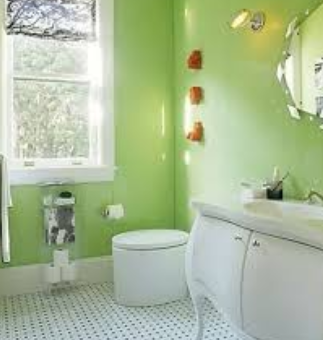 Light is a tricky thing, emphasizing and attracting our attention. Darkness deepens and generates dimensions in space. Dark colors of paint can't be as dark as shadows, though, unless you're really into that kind of stuff. As some light is reflected off the surface, you still see the darker colors of the paint. But it is a must to use them carefully.
Light is a tricky thing, emphasizing and attracting our attention. Darkness deepens and generates dimensions in space. Dark colors of paint can't be as dark as shadows, though, unless you're really into that kind of stuff. As some light is reflected off the surface, you still see the darker colors of the paint. But it is a must to use them carefully. Use this concept when using lighter and darker colors for your bathroom painting project, as you look at how light plays off artifacts in nature and how shadows add depth and dimension. Ok, here's how.
Choosing your new scheme of color
Before you paint your bathroom, you will have to decide on a new color scheme. The best technique is to choose three colors that go well together in lighter and darker shades. Then pick a second color that is at least two shades lighter and a third that is two shades darker. Find a color you like. You may select lighter variations of the same color or, for some variation, choose three complementary colors. To generate dimension in the space, you can use the various shades of paint color to draw some walls or sections backward and some forward.
Build Dimension with Darker Colors
The majority of small bathrooms have a combination of a tub/shower. With a lot of light reflected off it, the tile is usually shiny. A great place to paint darker colors is the cove that occurs along the top of the bath or shower section. The darker color will build a new depth in the area, provided the contrasting light of the tub and tile surface highlights.
For the majority of the shower, use the Middle Shade Of Paint
The second color you have selected can be used in most bathrooms. The key background of the room will be created using this color.
On Trim & Molding, use the lightest color
People used to use a dark stain on trimwork and molding, but a more modern feel is created by lighter colors. You can paint the trim and molding in the bathroom using the lightest color of the ones you select. This provides a more reflective surface that draws focus, while a dimensional effect is produced by the medium and darker shades. Bear in mind that you don't have white or cream to stick with either! Choose choices that pick up small bits of all three colors of paint to create a seamless look while you choose decorations for the bathroom.

